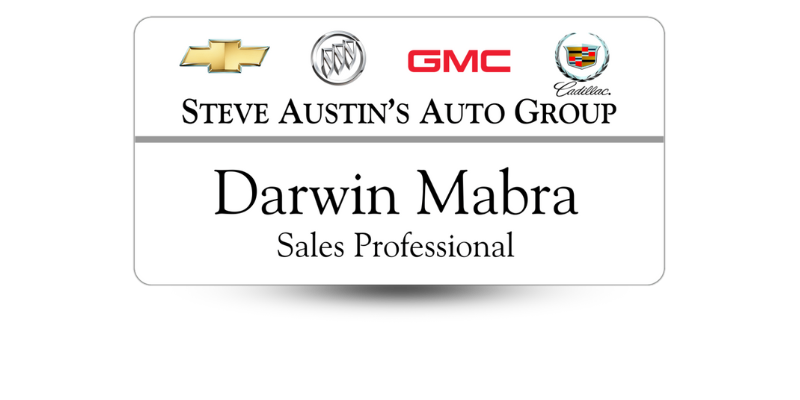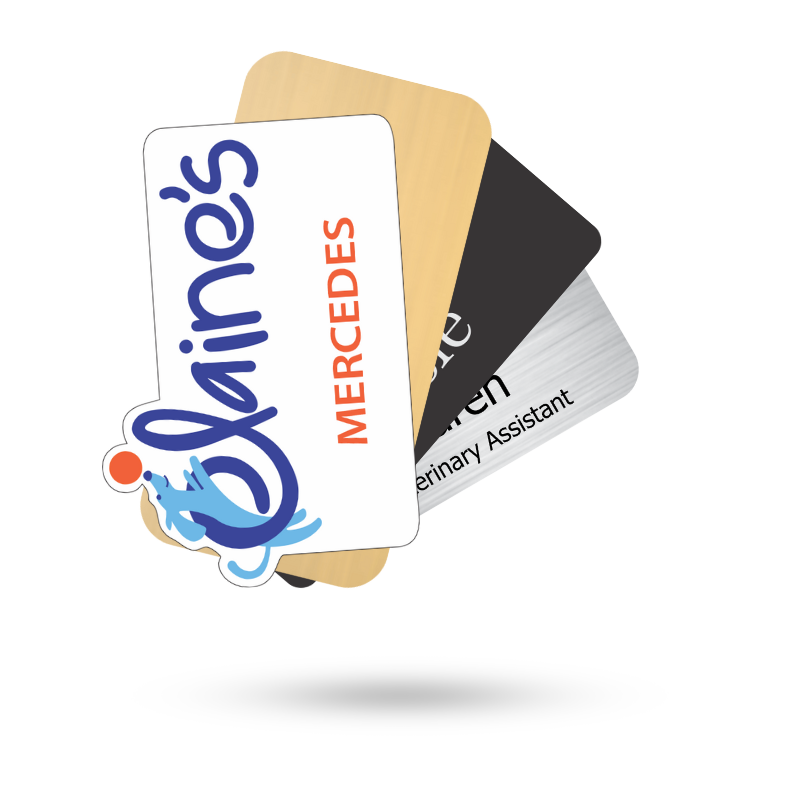Name Badges That Work in Harsh Environments
Durable Name Tags

When you’re on a construction site, managing a warehouse, or working an outdoor event in the middle of July, the last thing you want to worry about is your name badge falling off, smearing, or becoming unreadable. But standard badges just aren’t made for these kinds of conditions.
If you’ve ever had a badge peel off due to sweat, smudge from the rain, or disintegrate after rubbing against your vest all day, you know what we’re talking about. In rugged, high-impact environments, your badge needs to be just as tough as you are.
Here’s how to find name badges that actually hold up—no matter how rough the workday gets.
Why You Need High-Quality Name Badges
Many name badges are designed for climate-controlled offices and smooth carpeted floors—not dust, dirt, rain, and sweat. Here are some common problems that come up when using name tags in tough environments:
- Adhesive failure: Stick-on badges lose grip quickly with heat, moisture, or movement.
- Ink bleeding or fading: Rain, humidity, or direct sunlight can blur badge text.
- Fragile materials: Paper or card stock badges rip, crumple, or disintegrate by the end of a shift.
- Safety issues: Loose badges or breakable lanyards can become hazards around machinery.
If you want to keep workers clearly identified, safe, and professional-looking, you need to go beyond basic.
Key Features of Rugged Name Badges
Not all badges are built the same. When the environment’s working against you, these features can make all the difference:
1. Waterproof and Sweatproof Materials
Whether it’s pouring rain or just a humid summer day, badges that repel water are a must. Look for laminated, sealed, or synthetic materials that don’t soak, smudge, or disintegrate.
2. Heavy-Duty Adhesives
If you’re using a stick-on badge, it needs an industrial-strength adhesive that holds up through movement, sweat, and friction. Cheap glue won’t cut it.
3. UV-Resistant Print
If your team works outside, badge print should resist fading—even after hours in direct sunlight.
4. Scratch-Resistant Surfaces
A badge is no good if it’s unreadable. Durable coatings prevent the wear and tear that comes from brushing against belts, tools, or rough gear.
5. Sanitizable Finishes
In dirty or high-contact jobs, badges need to be easy to wipe down, especially in food service, sanitation, or healthcare fieldwork.
6. Secure Attachments
Strong clips, reinforced lanyards, or arm-band holders help badges stay on without snagging or slipping off during the day.
Best Materials for Tough Conditions
If you're shopping for long-lasting, heavy-duty badges, here are your top material choices:
- PVC Plastic: Waterproof, sturdy, and great for full-color printing. Ideal for most rugged environments.
- Metal: Extremely durable and resistant to heat, impact, and abrasion. Best for industrial settings.
- Encapsulated Badges: Fully sealed, often in a flexible plastic pouch—perfect for outdoor events or food handling.
Tip: Avoid paper-based inserts unless they’re fully laminated or protected in a sealed holder.
Who Needs Tough Badges?
Harsh-environment badges aren’t just for construction crews. They’re a must-have in any job that involves weather, sweat, movement, or manual labor. Common use cases include:
- Construction workers and foremen
- Warehouse and distribution teams
- Outdoor event staff and security
- Food truck vendors and farmers’ market teams
- Plumbers, electricians, HVAC pros
- Disaster response or medical field units
If you're sweating, moving, or getting your hands dirty, your name tag should be able to keep up.
Design Tips for Visibility and Safety
Tough badges aren’t just about surviving the elements—they should also be easy to read and safe to wear:
- Use bold fonts and high-contrast colors so names are readable at a glance.
- Include job role or department for faster identification on job sites.
- Add barcodes or RFID for site access, time tracking, or equipment checkout.
- Consider reflective accents for night visibility—great for security or roadside work.
The right design isn’t just functional; it improves communication and safety on the job.
Attachment Options: What Works Best
The way you wear your badge matters just as much as the material it’s made from. Here’s a quick breakdown:
- Alligator Clips: Secure and strong—ideal for shirts, vests, or collars.
- Magnetic Backs: Clean look, but not great near metal surfaces or sensitive tools.
- Breakaway Lanyards: Good for safety and quick removal—especially around machinery.
- Arm-band Holders: Keep the badge out of the way and visible. Perfect for active roles.
Choose the attachment style that matches the activity level and safety concerns of your workplace.
Name Badges for Tough Environments
Your badge says a lot about your team—but if it’s torn, faded, or falling off halfway through the day, it sends the wrong message.
In demanding environments, standard badges won’t do the job. Whether you’re in construction, warehousing, food service, or fieldwork, it’s time to upgrade to name badges that actually work where you do.
Sweat proof. Waterproof. Built to last. That’s the kind of badge your crew deserves.
Share Article
Categories







